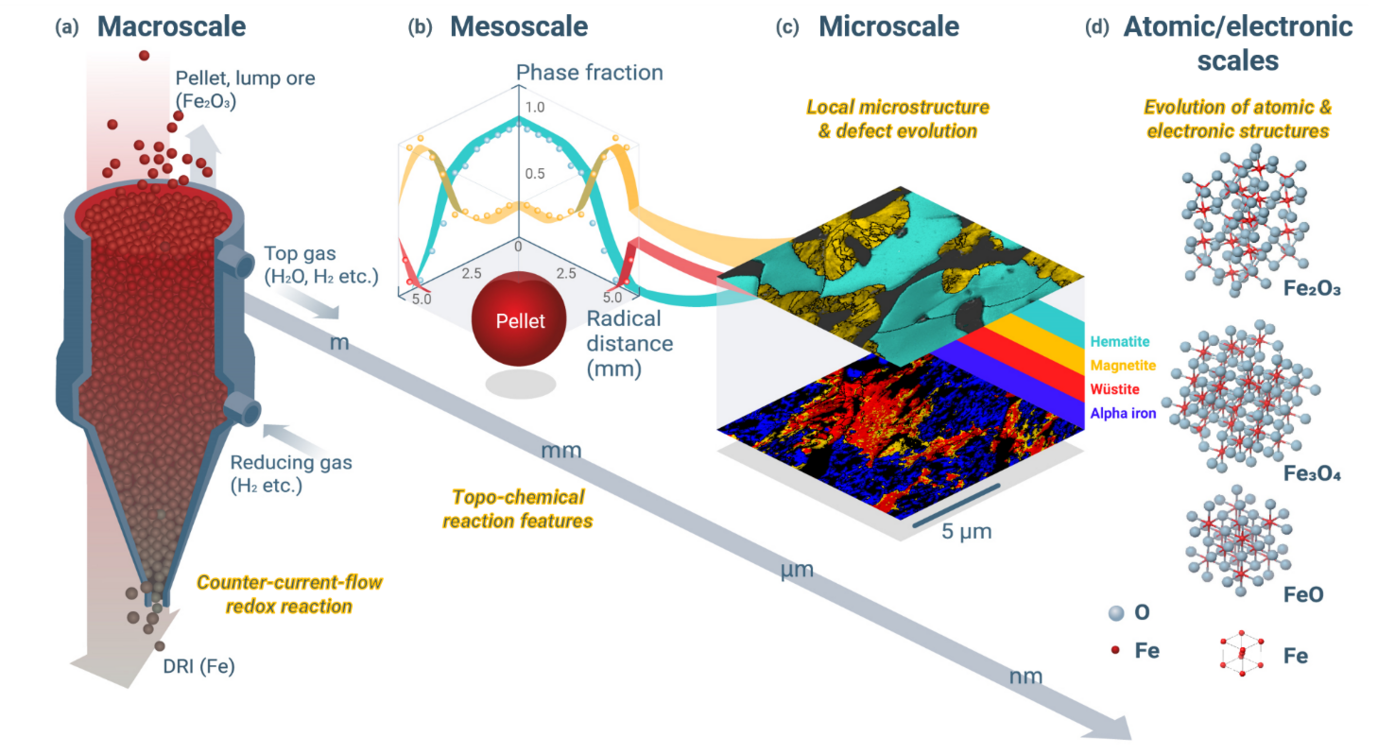The HYDRI project: Multiscale and Operando Studies on the Role of Micro- and Nanostructures in Hydrogen-based Direct Reduction of Iron Oxides
The HYDRI project aims at disentangling the correlation between material micro-/nanostructures and the hydrogen-based direct reduction (HyDR) kinetics, to reveal the vital role of acquired defects in HyDR processes. A multiscale and time-resolved operando approach will be used to characterize micro-/nanostructures in HyDR. Gaining better insights into these effects enable improved access to the microstructure-based design of more efficient HyDR methods, with potentially high impact on the urgently needed decarbonization in the steel industry.
Fossil-free ironmaking is indispensable for reducing massive anthropogenic CO2 emissions in the steel industry. Hydrogen-based direct reduction (HyDR) is among the most attractive solutions for green ironmaking, with high technology readiness. In general, HyDR proceeds two to three times faster than CO-based direct reduction. This is attributed to the physical properties of hydrogen, i.e., its small molecule size, low viscosity, and high mobility when diffusing as a molecule through pores or as dissociated atom through solids. The HyDR process is characterized by a hierarchy of phenomena that can influence the reaction at different length and time scales (Fig. 1). They range from transport and reaction kinetics in a shaft reactor at macroscopic scale down to chemical reactions at interfaces at atomic scale and catalysis, dissociation, and charge transfer at electronic scale. Reaction kinetics is also affected by micro-to-atomic-scale features of the different oxides and the adjacent iron layers, including crystal defects, porosity, mechanics, and local composition. Although these dynamically evolving nano-/microstructure features can alter the kinetics by orders of magnitude, a complete picture of their roles and interactions is still missing.
This project employs a multiscale and time-resolved operando approach to investigate the role of micro /nanostructures in HyDR kinetics. The HYDRI project particularly targets: (1) The correlation between the evolution of individual phases and the overall HyDR kinetics, understanding the rate-limiting mechanisms from a microscopic perspective; (2) The role of interphase boundaries in HyDR mechanisms and kinetics; and (3) The role of micro/nano porosity in mass transport during HyDR. A comprehensive understanding of the effect of micro-/nanostructures on the reduction kinetics can pave the way for improved microstructure design of the ore pellets and optimizing thermo-mechanical treatment to accelerate the outbound mass transport during the HyDR process.













